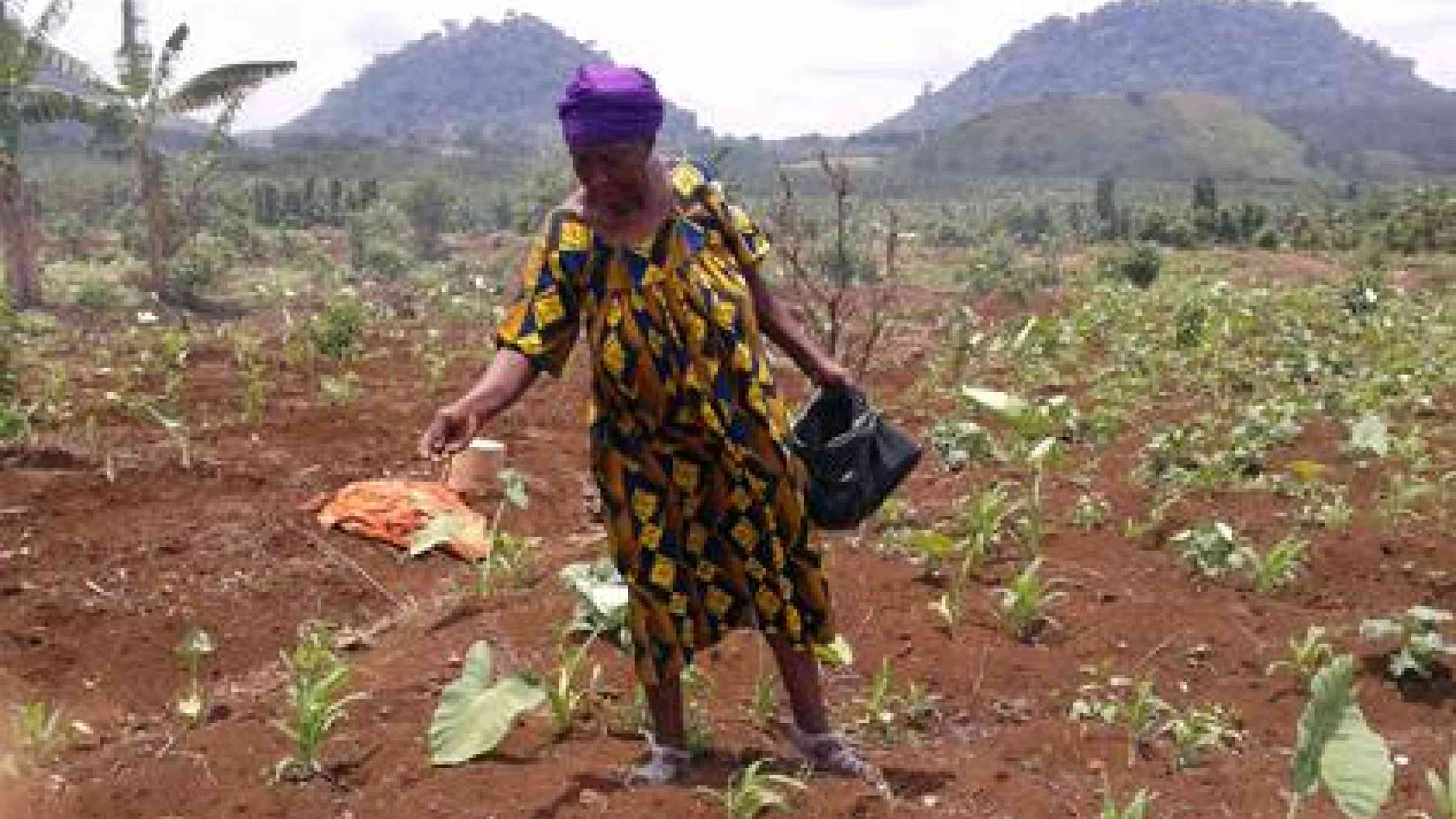Local knowledge protects Cameroon harvest

Ms. Lydia Manyi, a subsistence farmer in Akum, northwestern Cameroon, uses traditional knowledge to protect her crop from drought. (Photo: Kingsley Nfor/UNISDR)
AKUM, CAMEROON, 23 September 2015 - Farmers in northwestern Cameroon are deploying traditional knowledge to boost the survival of their crops, thereby curbing the risk of disasters posed by increasingly unpredictable weather patterns.
Ms. Lydia Manyi, a 67-year-old subsistence farmer in the village of Akum, explained some of the simple but effective methods that she uses.
“I soak my maize and bean seeds in water for several days before planting. It is just like using a nursery bed for my seeds. This helps the seeds to cope with dry weather conditions after planting before the rains come,” she said.
Ms. Manyi explained that prolonged dry weather means that early rains often fail to penetrate the soil deeply, hampering seed germination. Pre-soaked seeds have an edge, as they germinate and their shoots are thus able to absorb water from the atmosphere for growth.
“Droughts have rendered the soils dry and hot so when a grain is wet it can quickly germinate. It is also not easily dug up by birds,” said Ms. Manyi.
According to Ms. Collette Abogo, an expert from Cameroon’s Ministry of Agriculture, “This practice, which is used widely in this region, is helping farmers to minimize the impact of droughts and even flash rains that can wash off the topsoil.
“The plant quickly develops roots and cannot easily be washed off or be exposed,” she explained.
Ms. Manyi also sprinkles ash on her maize crop during the first two months of growth to reduce pest infestation. To ward off livestock, she applies a mixture of goat and sheep dung to her crop’s leaves. “This helps to keep away the livestock as they cannot eat their own waste,” she said.
Her story illustrates the role of traditional methods – often handed down by word of mouth for generations -- in the mitigation of climate and disaster risks at the community level.
The Sendai Framework for Disaster Risk Reduction, a 15-year pact adopted earlier this year by the international community, places strong focus on harnessing the power of traditional knowledge.
“As the world continues to witness more adverse effects of climate change, indigenous knowledge is adapting to this change. Local knowledge of doing things becomes very important in avoiding famine and other disasters,” said Dr. Joseph Amougou, a lecturer at the University of Yaoundé, in Cameroon’s capital.
According to Dr. Amougou, there has been a distortion in rainfall patterns across Cameroon.
“What is most interesting is the fact that rainfall variations have been recorded more in some years, for example 88 days of rainfall in 1998, as opposed to 178 days of rainfall in 1984 all over Cameroon,” he said.
“This trend is persisting and could go over long periods of time with worsening climate variations characterized by very short rainy seasons and prolonged dry seasons that are witnessed today.”
Lacking scientific information, the people of Akum anticipate weather changes by observing variations in the colour of the water in the streams and the behaviour of migratory birds and insects – this on its own is unreliable.
This year’s edition of International Day for Disaster Reduction, on 13 October, will focus on traditional, indigenous and local knowledge, which complements modern science and adds to an individual’s and societies’ resilience.
Explore further
Also featured on
Is this page useful?
Yes No Report an issue on this pageThank you. If you have 2 minutes, we would benefit from additional feedback (link opens in a new window).